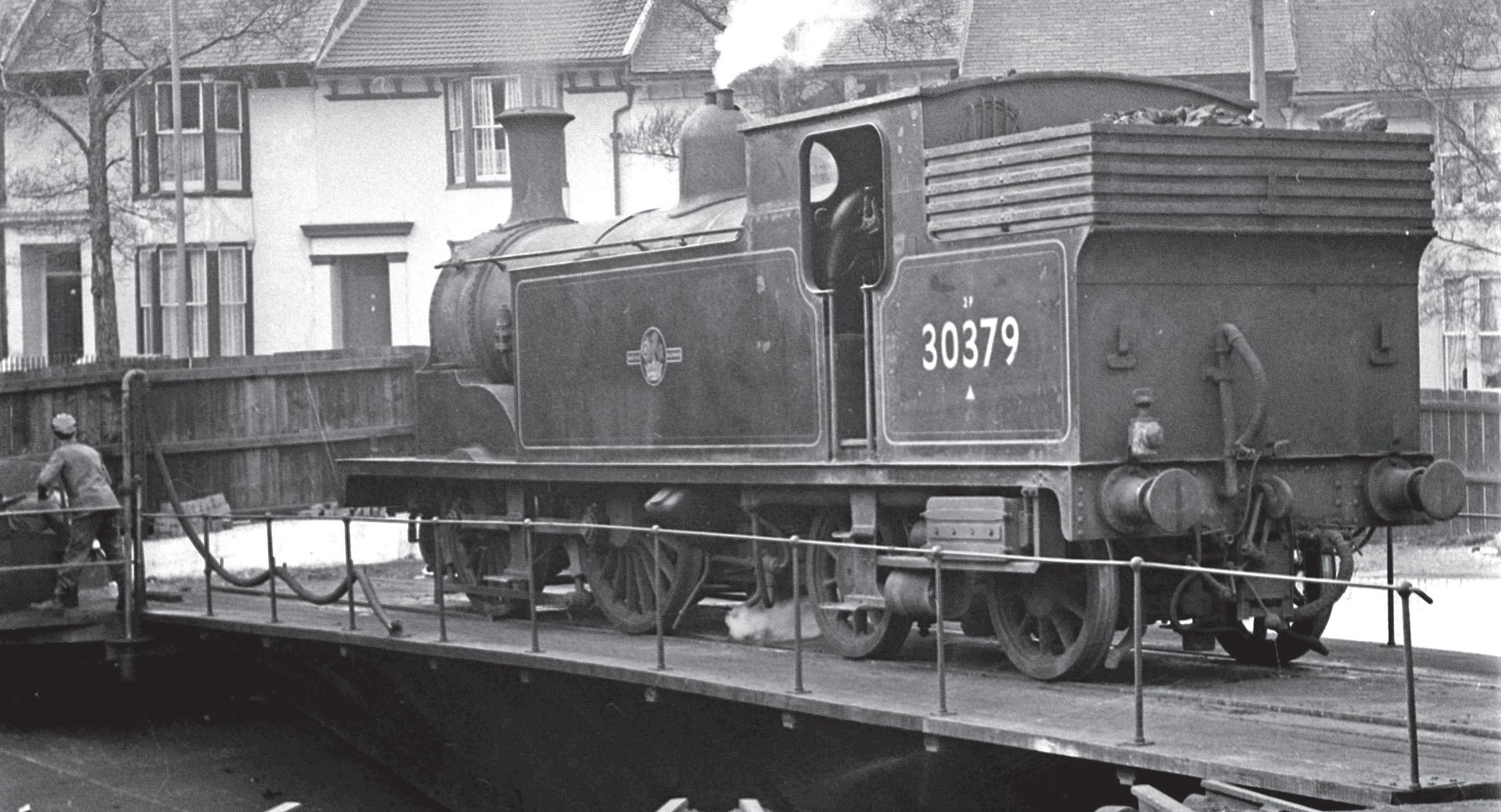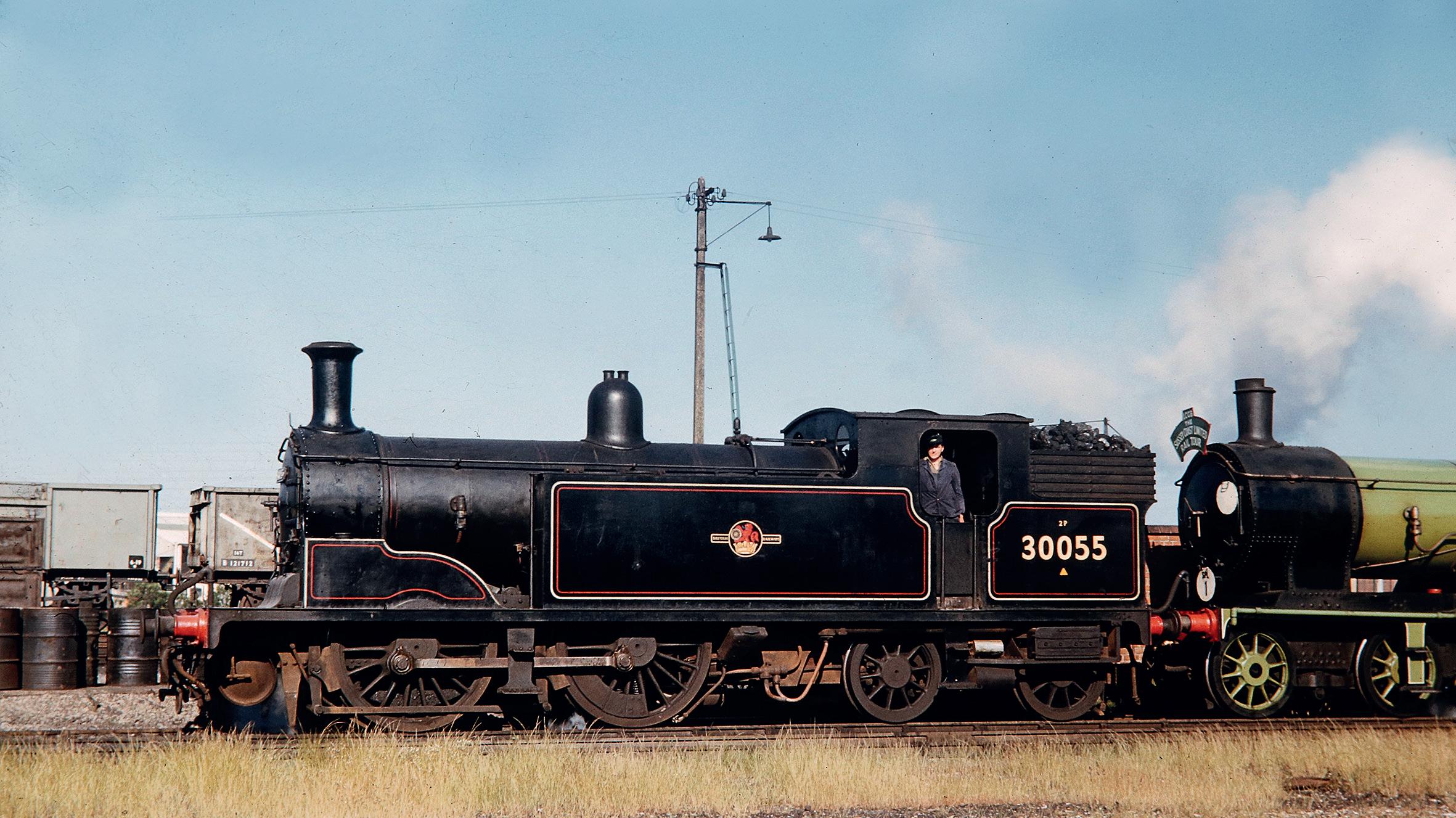The M7 0-4-4Ts Illustrated
 Peter Moody
Peter Moody

 Peter Moody
Peter Moody


PeterMoody had two lifelong interests, railways and music. In the latter category he had played in a group ‘The Grebbels’ managed by the same individual who looked after The Rolling Stones, and The Yardbirds; the last named probably recalled by those of a certain age. Later he formed his own ‘blues’ record label and subsequently worked on what can only be described as beautifully crafted compilation albums. Peter’s railway interest evolved from annual holidays to Devon where he was quoted as saying ‘I know an M7 was the first locomotive of any real recognition to me’. Firstly this was in the West Country but later confirmed on visits to Clapham Junction during his schoolboy years; not surprisingly the M7 was always his favourite. The lure of the life of the type never left him. He began collecting M7 negatives - simply for their captive nature of Mr Drummond’s beautiful 0-4-4 tank. Peter was married with three sons and is survived by his second wife Shirley who has kindly allowed Peter’s previously unpublished manuscript to reach a wider audience.

© Text: the estate of the late Peter Moody. Images: as attributed.
Design: The Transport Treasury 2023. ISBN 978-1-913251-03-6
First Published in 2023 by Transport Treasury Publishing Ltd.,
16 Highworth Close, High Wycombe, HP13 7PJ
www.ttpublishing.co.uk
Printed in the Malta by the Gutenberg Press.
The copyright holders hereby give notice that all rights to this work are reserved. Aside from brief passages for the purpose of review, no part of this work may be reproduced, copied by electronic or other means, or otherwise stored in any information storage and retrieval system without written permission from the Publisher.
Front cover: Genuine colour from 1939, not a modern-day colourising, pull-push fitted M7 No 51 at Bournemouth in 1939. S C Townroe.
Frontispiece: Taking on water at Waterloo. Nos 30130 with 30320 paused between carriage and pilot duties on 2 April 1955. Note the locomotives display different head codes. Author’s collection
Rear cover: Conversation piece with No 30125 at Fawley waiting to return to Southampton. The working is slightly unusual being Western Region stock but is explained as these coaches would otherwise lie idle at Southampton Terminus having arrived with a passenger service from Didcot. The Southern Region consequently ‘borrowed’ them during this time for a Fawley train after which they would return to the Western Region, again from Southampton Terminus. Ron Roberts
Publisher’s note: Peter Moody had planned for his book The Illustrated M7 to be published around 2020 although the Covid pandemic put such ideas on hold. In the ensuing time Peter sadly passed away but it was a privilege to be able to pick up his work and with the Family’s permission bring it to a conclusion, something Peter had been so passionate about. The publisher would therefore like to place on record his thanks to the family, especially Shirley, James and Mark for their permission to publish. We would also like to thank the Bluebell Museum Archive, particularly, Tony Hillman, Roger Merry-Price and Chris Wilson for assistance with images. Peter’s work also draws heavily on the illustrations of the Casserley family, father and son, Henry and Richard. All the images from the plates of Henry Casserley were agreed for use before the family began the disposal of material to collectors and societies. The images published are in agreement with the Casserley family - as originally applied with Richard Casserley and finally with Mrs Margaret Casserley.
Above top: No 30667 a full year later, entering Exeter St David’s from Cowley Bridge Junction in June 1959 with milk tanks in tow; possibly from Torrington. Author’s collection
Below: Yeovil Shed on 27 October 1962 and now with pull-push equipment. In this form No 30667 was a regular on the pull-push Bournemouth - Wareham - Swanage line before being withdrawn during 1964. Author’s collection


As with other classes, H C C photographed many M7s throughout their three tenures of ownership. His images capture the locomotive changes in visual terms and from private ownership through to nationalisation and with it public control. Originally living at Bromley, H C C used to travel by train to work at Holborn with the Prudential organisation. As if to prove his love of steam and the fact ‘his part’ of the Southern Railway was being electrified, he moved to Berkhamsted which was served by the LMS. As he aptly described, ‘I had no intention of commuting to work by the ‘juice wagon’. His archive of locomotives and railway scenes from the pre-grouping companies, the Big Four at the grouping and, latterly, the post-war nationalised railways network, makes a major contribution to the country’s history of our steam railways.
1936 – 2017
Richard Casserley followed his father’s footsteps of all things railway with full enthusiasm. Right from the start he was encouraged in his father’s hobby, with his own log book detailing all train trips travelled on, with destination, engine number, mileage - and who accompanied him. As a result it was not long before Richard was accompanying his father on every possible journey, similarly taking photographs alongside his father. Richard Michael Casserley was the only child of Henry and his wife Kathleen. He was born on 31 December 1936 whilst the family were living in Bromley, Kent but when the family moved to Berkhamsted Richard won a scholarship to Berkhamsted School, eventually leading to New College, Oxford where he read mathematics. Even so his studies took second place to his exploring the local railway network and he was equally proud of the fact he



FOURTH TYPE - FIRST VARIANT 20 BUILT 1904 - 1905 ORDER NUMBERS

Left: No 379 (BR 30379) at Three Bridges on 29 June 1963. This engine was withdrawn from the same depot in October. Author’s collection. No 226 Image 2. Author’s collection

Bottom: On the turntable at Brighton Works, 28 April 1963. The turntable sat at the north end of the works aside the sheds facing residential properties on the opposite side of New England Road. Good view of the position of the ATC battery box. Author’s collection
Opposite top: No 104 (BR 30104). At Eastleigh, 20 May 1923. Since built, the feed water heating pipes have been removed. 3-link rather than screw coupling. From the position of the long clinker shovel the fire is being cleaned. H C Casserley
Opposite bottom: Now in BR livery - different coupling fitted - and based at Bournemouth, seen alongside Bulleid pacific No 34094 Mortehoe, 16 July 1960. H C Casserley

‘The M7 0-4-4Ts Illustrated’ is one man’s record of a single locomotive class that head an endearing fascination; the LSWR ‘M7’ class. First introduced in 1897, 105 examples were built over the next 12 years with all but one surviving into British Railways ownership in 1948. With many of the type already over 50 years old at that time, they nevertheless continued to perform, passenger, branch freight and shunting duties often miles away from their original home, the last examples finally taken out of service in 1964. Two survive in preservation. Peter Moody first became acquainted with the class as a child in Devon and over the years developed a fascination for the class culminating in a large collection of images and a desire to see his work brought to a wider audience. Sadly that was not be during his lifetime, but Transport Treasury are delighted to bring Peter’s efforts to a rightful conclusion; ‘The Illustrated M7’.



Price:- £25.95
 The M7 0-4-4Ts Illustrated Peter Moody
The M7 0-4-4Ts Illustrated Peter Moody